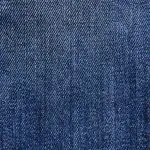Have you ever wondered what fabric does not catch fire? Pure cotton, 100% cotton, wool, silk, and linen are some examples of fire-resistant fabrics. Many fabrics do not catch fire easily.
Let’s learn more about the properties of these fabrics and how they compare to other fabrics in terms of fire resistance.
Table of Contents
Difference between Flame Retardant Fabrics and Flame Resistant Fabrics?
“Flame retardant” and “flame resistant” are often used interchangeably, but they have different meanings. A fabric that is flame retardant has been treated with chemicals that slow the speed of burning, while a flame resistant fabric has been treated with chemicals that make it less likely to catch fire.
The chemicals used in both processes can be harmful to people’s health and the environment; they can also cause discoloration over time, which means you may not be able to see any difference between a treated or untreated piece of furniture once it has aged (and potentially broken down).
While most furniture manufacturers use these treatments for their products’ protection against fire, there are several other options available if you’re looking for more natural options that won’t compromise your family’s safety:
- Choose fabrics made from natural fibers like wool or cotton instead of synthetic ones like polyester; these natural materials resist heat better than synthetics do.
- Consider using wool blankets instead of traditional comforters at night—they’re just as warm but won’t catch on fire if exposed to heat sources such as candles or space heaters (and are also machine washable).
Which Fabric Doesn’t Catch Fire?
Wool
If you’re looking for a fabric that doesn’t burn, wool is the answer. Wool has been used as a fabric since ancient times and is still popular today. Although it takes longer to dry than cotton, linen, or polyester, wool is durable and flame-resistant.
The wool comes from sheep’s hair or goat’s fur and can be spun into yarns of varying thicknesses depending on the desired end product. It is soft, warm, and breathable—all qualities that make it great for clothing items such as sweaters or coats (which will protect you from exposure if there happens to be a fire). It also keeps you cool in hot weather due to its insulating quality.
Because wool does not catch fire easily (even when dry), many products today incorporate this material into their designs:
- Firefighters use suits made out of 100% wool because they are comfortable yet durable enough to withstand extreme conditions such as high temperatures while fighting fires;
- Hospital scrubs are made out of natural fibers like cotton or synthetic blends because they’re easier on the skin during long shifts without chafing;
- And finally… You! You may have noticed that many winter coats come with “flame resistant” labels at stores—which should clue you in on what makes them so great: 100% wool!
Modacrylic
Modacrylic is a synthetic fiber that doesn’t burn easily but can melt and drip onto flammable materials beneath it in an enclosed space — so keep it away from other fabrics in your closet! Modacrylic fabrics that don’t catch fire include fleece blankets and polar fleece jackets.
Nomex
Nomex is a DuPont fabric that’s often used for firefighters’ clothing. Nomex has a high melt point, making it difficult for flames to penetrate through it. It also has self-extinguishing properties, which means it will go out if exposed to heat or flame long enough. The fabric consists of spun aramid fibers that are treated with an epoxy resin system. Nomex can withstand temperatures up to 300 degrees Fahrenheit (150 degrees Celsius), which makes it useful for firefighters who must enter areas where fires have broken out.
Kevlar
Kevlar, a synthetic fiber originally made by Dupont and used in bulletproof vests, is one of the most well-known flame-resistant fabrics. It’s also extremely expensive — so much so that it’s usually only found in high-end suits.
These fabrics are all known as “thermoplastic fibers,” which means they’re made from polymers that melt at high temperatures rather than burning quickly like most other fabrics. The idea is that when you’re exposed to a flame for an extended period, your suit melts instead of burns — protecting you from serious burn injuries.
Polyester
Polyester is a synthetic fiber that can be made from petroleum byproducts or plant-based sources like sugarcane or hemp. Polyester is strong and durable, making it perfect for use in clothing, bedding, and other household items. It’s also very flame-resistant and won’t burn when exposed to high heat or flame.
Nylon
Nylon is one of the most popular fabrics used in clothing due to its durability and strength. It’s easy to clean, and it doesn’t wrinkle easily, which makes it perfect for travel clothes or everyday wear. Nylon doesn’t burn easily because it’s not porous like cotton or wool, which means there aren’t any spaces where fire can grow inside it.
Voile
Voile is a sheer fabric that doesn’t catch fire and can also be used in curtains, bedding, and clothing. It’s fragile and lightweight, which makes it easy to use in many different products. It’s also an inexpensive option that doesn’t require much maintenance.
Fur products
Fur is naturally flame resistant because of its insulating properties and the fact that it’s not made from synthetic fibers. However, it can be damaged by heat, so always look for fur products that have been certified as being safe for use around open flames. If you want to be extra safe, you can have your fur coat treated with a flame retardant spray. This treatment will give you even more protection against fire.
Leather
You might not think about it much, but your furniture can catch fire. It’s not a common occurrence, but if it happens, you want to be sure that your home is as safe as possible.
Leather is a natural fabric that does not need to be treated for flame resistance. However, many people like the look of leather so much that they will have their furniture upholstered in it anyway. If you choose to go this route, be sure to ask if the leather has been treated with any chemicals that would make it dangerous if exposed to fire.
Hemp Fabrics
Hemp fabric is made from hemp plants, which produce strong fibers. It is naturally flame resistant and can be manufactured into many different types of fabrics. Hemp products include clothing and luggage. They’re also eco-friendly, biodegradable, and recyclable!
What fabric catches fire easily?
You may have noticed that some fabrics catch fire easily and others don’t. There are a few factors that determine the degree of flammability of a fabric:
- Type of fiber – Cotton, wool, silk, and linen are all-natural fibers known for their tendency to ignite more easily than man-made synthetic polyester or acrylic. The longer and finer the fibers are, the greater their ability to catch fire when exposed to heat and flame. Synthetics like polyester tend not to burn as much because they’re less susceptible to ignition by oxygen or heat (this difference is why synthetic materials such as nylon can be used in firefighters’ protective clothing).
- Density – Materials with higher densities are more resistant to heat which means they won’t catch on fire so easily. Polyester has a very high density compared with cotton which makes it harder for small fires (like sparks from an engine) from igniting into large ones (like forest fires).
What is Fabric Burn Test?
To test a fabric, rub a match or flame into the fabric. If the fabric ignites, it is not flame resistant. If the fabric does not ignite, it is flame resistant and safe for use in fire suits.
This method can be used to determine whether a garment or another item made from a certain material will catch fire when exposed to extreme heat.
When Is Flame-Resistant Clothing Required?
Flame-resistant clothing is required when you are working in an area that is:
- Filled with flammable gas
- Filled with flammable liquids, or
- Is designated as such by the appropriate authorities (fire marshal, building inspector)
Is Flame-Resistant Fabric-Safe?
Flame-resistant clothing is safe, but it’s not the same as fireproof or fire-resistant clothing. Flame-resistant clothing protects you from high-temperature fires that could cause third-degree burns or worse. If a flame does ignite your garment, it will burn out quickly and leave no significant damage behind.
Flame retardant fabrics are chemically treated to make them less flammable than untreated materials. They may not be completely flameproof, however: if exposed to the extreme heat they can still catch on fire (although they’ll burn slower than non-treated fabric).
Conclusion
It’s no secret that flames and fabric don’t mix. From a practical perspective, fabrics help determine your outfit, so you don’t want to do something that will unnecessarily prohibit your everyday fashion choices. But beyond practicality, standing there naked isn’t necessarily the best option either!
If you’re looking for flame-resistant fabric to use in your garments or industrial insulation, it’s a good idea to keep this list handy. It will help you separate the wheat from the chaff so that you aren’t wasting time and resources on fabrics that won’t provide fire protection.
- The Use of Nonwovens in Construction and Civil Engineering - July 11, 2025
- The Use of Nonwovens in Construction and Civil Engineering - July 11, 2025
- The Use of Nonwovens in Construction and Civil Engineering - July 11, 2025






